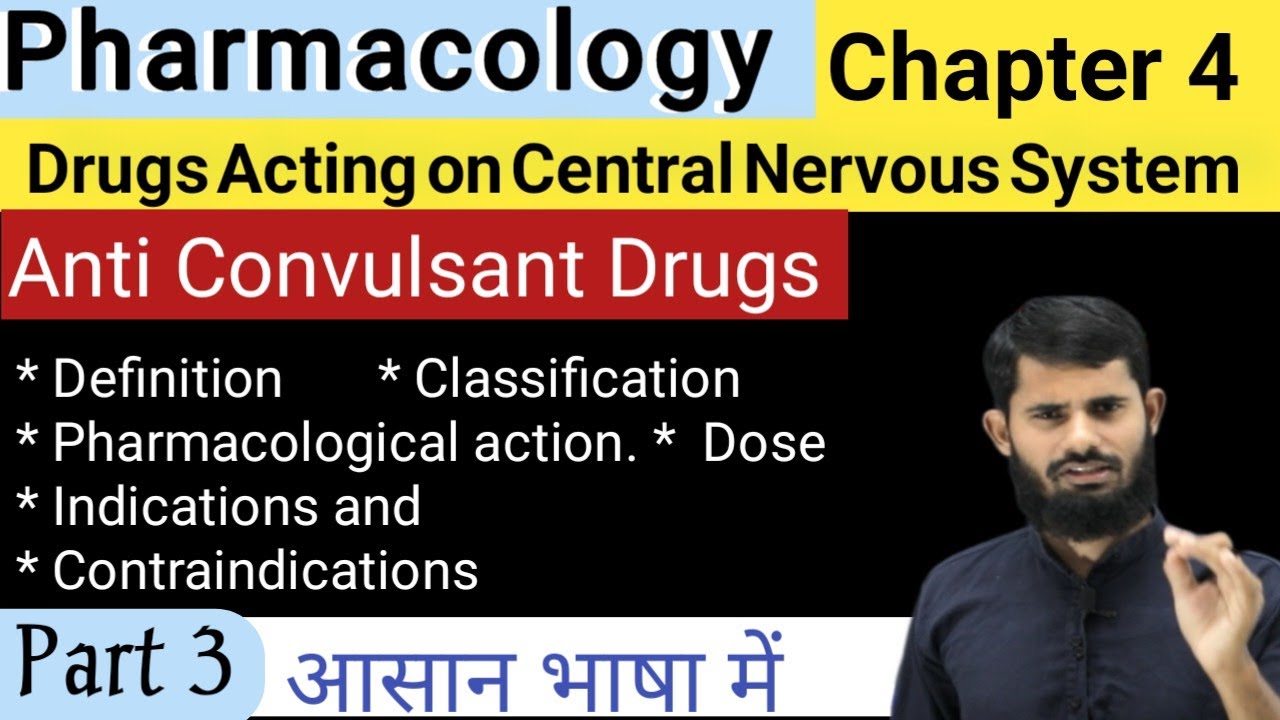Fármacos atuante no SNC - Psicofármacos
Summary
TLDRThis video explores various drugs used to treat neurological and psychiatric conditions. It covers Parkinson’s disease treatments, including levodopa and MAO-B inhibitors, which help boost dopamine levels in the brain. The video also discusses GABA agonists, benzodiazepines, barbiturates, antidepressants (both classic and atypical), antipsychotics, and anticonvulsants, explaining their mechanisms of action. By providing an overview of these medications, the video offers a clear understanding of how they interact with the central nervous system to address a range of disorders.
Takeaways
- 😀 MAO-B inhibitors are used in Parkinson's disease treatment to prevent the degradation of dopamine, crucial for managing symptoms.
- 😀 Levodopa is a standard treatment for Parkinson's disease, aimed at increasing dopamine levels in the synaptic cleft to alleviate symptoms.
- 😀 MAO-B inhibitors specifically target the enzyme that breaks down dopamine, helping patients with Parkinson's disease maintain higher dopamine levels.
- 😀 A key aspect of Parkinson's disease therapy is balancing the enhancement of dopamine without triggering side effects like the 'cheese reaction.'
- 😀 GABA agonists are used to promote sedation and relaxation by enhancing GABA receptor activity in the brain.
- 😀 Benzodiazepines and barbiturates are central nervous system depressants that can aid in managing anxiety and sleep disorders.
- 😀 Antidepressants are classified into typical and atypical groups, each with different receptor interactions and therapeutic uses.
- 😀 Typical antidepressants mainly block serotonin and norepinephrine reuptake, while atypical ones affect other neurotransmitters and receptors.
- 😀 Anticonvulsants, such as sodium channel blockers, prevent seizures by inhibiting sodium ion influx into neurons.
- 😀 The treatment of Parkinson's disease involves enhancing dopamine in the brain using specific medications that target dopamine-producing pathways.
Q & A
What is the role of MAO-B inhibitors in treating Parkinson's disease?
-MAO-B inhibitors specifically target the enzyme monoamine oxidase B, which breaks down dopamine. By inhibiting MAO-B, these drugs help preserve dopamine levels in the brain, which is crucial for Parkinson's patients who have a dopamine deficit.
How do levodopa and MAO-B inhibitors work together in Parkinson's disease treatment?
-Levodopa is a common medication that converts to dopamine in the brain, supplementing the dopamine levels. MAO-B inhibitors, on the other hand, prevent the breakdown of dopamine, helping to increase the amount of dopamine available in the synaptic cleft, which enhances the effects of levodopa.
What are the key characteristics of GABA agonists in neuropharmacology?
-GABA agonists enhance the effects of gamma-aminobutyric acid (GABA), a neurotransmitter that inhibits neural activity. This leads to increased sedation, which can be helpful in treating conditions such as anxiety and sleep disorders.
What distinguishes classical antidepressants from atypical antidepressants?
-Classical antidepressants typically target neurotransmitter systems like serotonin, norepinephrine, and dopamine. Atypical antidepressants may act on these systems as well, but they often have a broader range of effects and may block additional receptors, leading to a different side effect profile.
What are some examples of drugs that act as sedatives in the central nervous system?
-Benzodiazepines and barbiturates are common sedatives. They work by enhancing the effects of GABA, leading to increased inhibition of neural activity and promoting calming, sleep-inducing effects.
What is the function of anticonvulsants in treating epilepsy?
-Anticonvulsants prevent the excessive firing of neurons during seizures. Many anticonvulsants work by blocking the entry of sodium ions into neurons, which helps to stabilize neural activity and prevent seizures.
How do atypical antipsychotics differ from typical (classical) antipsychotics?
-Atypical antipsychotics typically block a wider range of receptors compared to typical antipsychotics. This leads to a different side effect profile and is often associated with fewer movement-related side effects like tardive dyskinesia.
What is the impact of dopamine in Parkinson's disease?
-Dopamine plays a crucial role in motor control. In Parkinson's disease, dopamine-producing neurons in the brain degenerate, leading to symptoms like tremors, rigidity, and bradykinesia (slowness of movement). Treatments aim to restore or preserve dopamine activity.
What are the risks associated with the use of monoamine oxidase inhibitors (MAOIs) in treating Parkinson's disease?
-While MAOIs can help preserve dopamine levels, they may also interact with certain foods containing tyramine (e.g., aged cheese, wine), leading to dangerous hypertensive crises. Careful dietary monitoring is required when using these drugs.
What is the significance of increasing dopamine in the synaptic cleft for Parkinson's patients?
-Increasing dopamine in the synaptic cleft helps compensate for the loss of dopamine-producing neurons in Parkinson's disease. This can improve motor function and alleviate symptoms like tremors and rigidity.
Outlines

Esta sección está disponible solo para usuarios con suscripción. Por favor, mejora tu plan para acceder a esta parte.
Mejorar ahoraMindmap

Esta sección está disponible solo para usuarios con suscripción. Por favor, mejora tu plan para acceder a esta parte.
Mejorar ahoraKeywords

Esta sección está disponible solo para usuarios con suscripción. Por favor, mejora tu plan para acceder a esta parte.
Mejorar ahoraHighlights

Esta sección está disponible solo para usuarios con suscripción. Por favor, mejora tu plan para acceder a esta parte.
Mejorar ahoraTranscripts

Esta sección está disponible solo para usuarios con suscripción. Por favor, mejora tu plan para acceder a esta parte.
Mejorar ahoraVer Más Videos Relacionados

Trabalho acadêmico: Estimulação magnética transcraniana ( EMT/TDCS)

Andres Lozano: Parkinson's, depression and the switch that might turn them off

Dexamethasone - Uses, Mechanism Of Action, Pharmacology, Adverse Effects & Contraindications

Anti Convulsant Drugs || Pharmacology Anti Convulsant Drugs | #Anticonvulsant_Drugs

Kuliah Biofarmasetika Pulmonal 1 Muslim Suardi Rahardy Koto

Obat Psikotropika
5.0 / 5 (0 votes)
